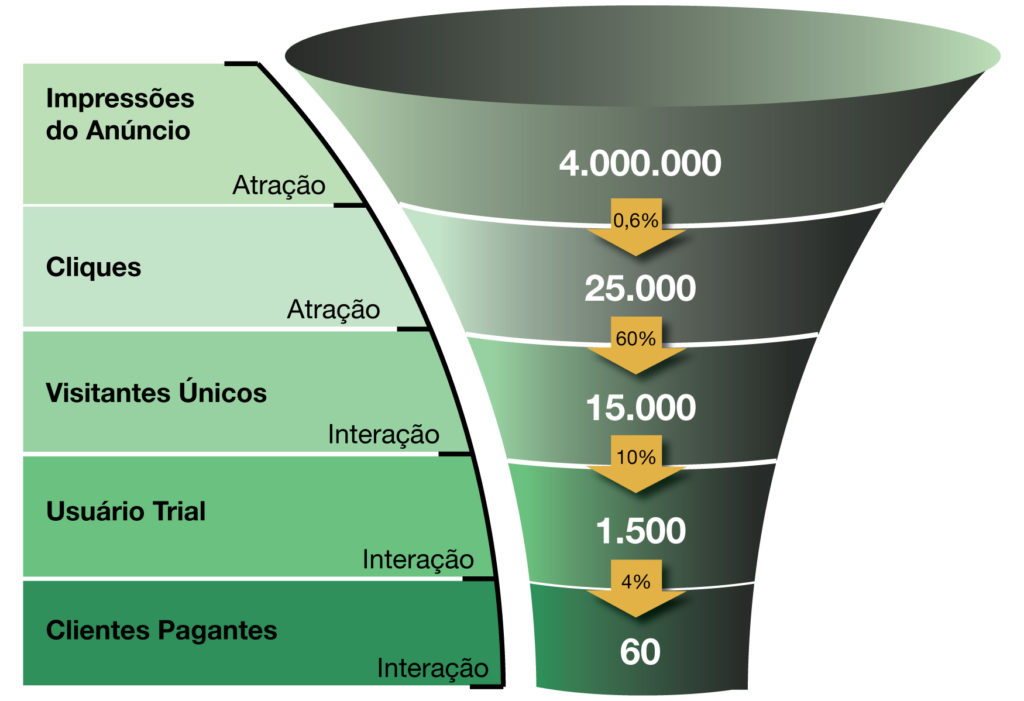Agile Product Discovery in a Non-Startup Environment
15 de September, 2011OKRs, the future of product roadmaps (or how and why we replaced product roadmaps with OKRs)
2 de May, 2016Take a close look at the data that your product generates! Aside from talking to your users and hearing their feedback, a mandatory way of knowing your product and how your users interact with it is through data. To take advantage of these data you must become a “data geek”, a person who knows in depth the data generated by the application and their meaning.
Every US dollar bill has the phrase “In God We Trust” written in. The importance of using the data as a source of information to understand things is so great that it was created the “In Data We Trust” phrase., that is, “In the Data We Trust.”
William Edwards Deming is an American engineer, statistician, and professor known for his work in Japan right after the World War II when he taught about quality statistical management and helped the Japanese to become the second larger economy of the world in only 10 years. The phrase below is credited to him:
“In God we trust. All others must bring data.” (W. E. Deming)
Which data is important?
Every data is important, but depending on your goal, some are more important than others. Knowing your data is a continuous task because at each new information you acquire, new questions come up that are going to need more data to be answered.
One of the first information that you will want to know is how many visits you get in your product’s website. To know these numbers, you can use some statistic report that your hosting provider offers. Another very common option is Google Analytics.
With a report like that in hands, you get some important information, such as the number of visits, the number of unique visitors, amount of page views, amongst others. Depending on the statistical system you are using, you will also check what is the first and the last page visited during the access to your website; where (which country and city) your visitors come from; if they accessed your website due to a Google AdWords or Facebook campaign, or some other online campaign that you are running, or if they found your website organically, that is, typing the address directly; or searching for something in some search system. It is good to remember that it is important to hold these reports not only for your website but also for your entire software product.
Be careful. Many of the visiting report systems show a great amount of information, and it is easy to get lost in this sea of data.
Along with the number of visits and access that your website holds, other important data you must know about your web product are:
- Amount of people who discover your product: it is possible to differentiate the way people discover your product by dividing them into two categories, paid and free. The paid ones are those who you have to invest some money, such as on Google AdWords, Facebook ads, ads on content websites (preferably those linked to the theme of your product) and ads on magazines (also preferably linked to the theme of your product). The free ones are those who you invest time and work to get to be known, such as creating relevant content on the theme of your website, interacting on blogs related to the theme of your product, making it easier to people recommend your product to others, etc. The return, in this case, comes slower but holds the advantage of not having any financial cost, only time and work.
- Amount of clicks generated by ads or other sources: this is an information a little more difficult to obtain because depending on the strategy to attract people to your website, it will not be available. The online ad systems such as Google AdWords, Facebook ads and ads on content sites usually have that information available and the price they will charge usually will be set on a price per click.
- Amount of unique visitors: they are the new visitors that your website gets. It is different from the number of visits: one single person can visit your site more than once until he/she decides to buy anything.
- Amount of visitors who become users: from these unique visitors, some will register to become a user of your system. If you offer a free trial period or a free version with no expiration date, this number can be reasonably big.
- Amount of users who become clients: by the end of the trial period, some of your users will want to become a client, that is, will want to pay to use your service. If you are offering a free version of your product, with no expiration date, you must have a paid version that pushes your users to leave the free version and pay for using your product.
Conversion funnel
Napoleon Bonaparte, French political leader and military officer known for the Napoleonic Wars, through which he was responsible for establishing the French supremacy over the major part of Europe at the beginning of the 19th century, had a great defeat in 1812, in the Russian Campaign. This campaign was a huge military operation designed by the French and their allies that had a great impact on the Napoleonic Wars, setting the beginning of the decay of the First French Empire. In this campaign, Napoleon brought 580,000 soldiers, but only 22,000 survived, and the rest perished in the way from France to Moscow due to the difficulties found on the way (cold, rain, rivers, etc.).

This image reminds very much a website conversion funnel, which can be built with the data we discussed previously. The conversion funnel shows us how many potential clients we are losing on the way of attracting people to the site until the point someone pays to become your client:

The funnel displays several opportunities for you to understand better how your users interact with your product. Each part of the funnel has its specific characteristics and can be expanded in different ways. Focus on one piece at a time and test it. In the worst-case scenario, if the test goes bad, you can always come back to the previous situation. For a data geek, the funnel must be the very first data focus to be collected and analyzed.
In the next article, we will see two other metrics that are the natural consequence of the conversion funnel: engagement, that shows how the user utilizes your product; and churn, that shows how many users are not using it anymore, helping to identify why this happens.
Digital Product Management Book
Do you work with digital products? Do you want to know more about how to manage a digital product to increase its chances of success? Check out my book Product Management: How to increase the chances of success of your digital product, based on my almost 30 years of experience in creating and managing digital products.
